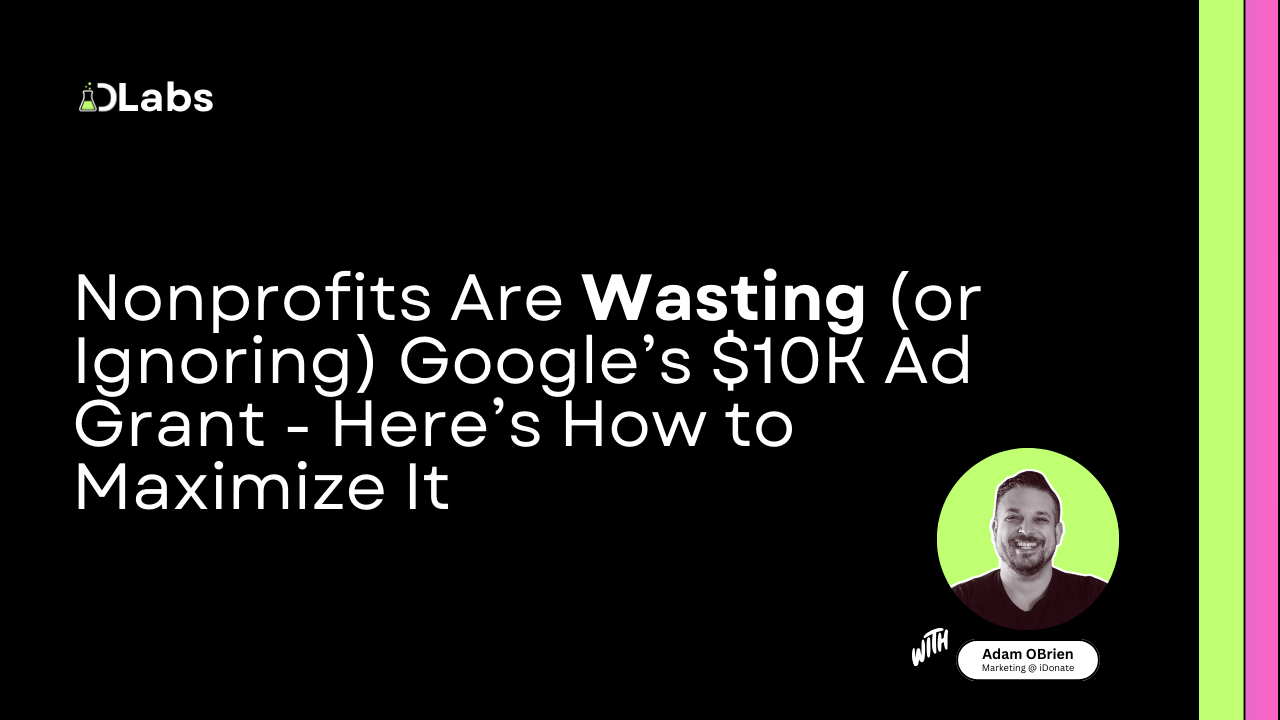Grants for Nonprofits: What Are They and How to Get One
The demand for funding resources will continue to grow the larger your nonprofit gets. As it does, finding additional streams of funding beyond your...

Mobile-First Pop-Up Donation Form
Launch mobile-first pop-up forms in minutes, use built-in tools to capture more donations, and optimize the giving experience—no dev team required.
New to online donation pages for your nonprofit? Start here.
Donation page A/B testing - no science degree needed.
Keep your donation page loading fast - and drive higher conversions.

The 4 Types of Online Donation Experiences
89% of donors leave without giving. Learn how to use the right donation form to close the gap and boost conversions.

If you’re thinking about applying for a grant for your nonprofit, learning about which type of grant is the right one is a big step.
There are several types of grants. From the federal down to the local level, each one comes with a different set of requirements and is designed for certain types of nonprofits. Even the smaller ones will have a lot of competition, so it is important to find which one is right for you before applying.
Most grants have a stipulation that they be used for a specific purpose. Grant foundations want to align their mission with others of the same mindset, so that is why finding the right grant for you takes a bit of research.
One of the most common – and competitive – types of grants are from the government. These are grants that come from either the federal, state, or local level. Unlike other types, government grants allow you to use the funds for your everyday expenses. They do come with stringent reporting requirements regarding your finances and how you are using the funds, but they still give you the ability to finance any operating expenses you have.
It is also important to note that there is no fee to apply for a government grant, and this is a common way for scammers to trick organizations into sending money when it is not required.
These types of grants come in a few different forms. A family foundation, much like Bill and Melinda Gates or the Walton family (founders of Walmart), are, as its name implies, founded and operated by a single family and sometimes includes a board of directors. Family foundations fall under the category of a private foundation, which in general terms receive their funds from a business or single benefactor and are usually subject to stricter federal rules, such as adhering to a minimum donation amount. All private foundations are considered 501(c)(3) organizations, so any donation to a private foundation is tax deductible up to 30% of the donor's adjusted gross income (AGI).
Of the 1.7 million nonprofits that are registered with the IRS, 7% are private foundations, close to 120,000 in total.1 That may not seem like a lot in comparison, but it’s reported that these foundations have assets of over $1.2 trillion,1 and in 2020, handed out an estimated $88.55 billion in giving, the highest dollar amount ever.2
Some of the most common foundation types include public and community foundations. These organizations include churches, hospitals, and schools and receive their funds from multiple similar sources. These are also tax deductible donations, and are usually more favorable for the donor since they allow for higher AGI limits.
One similarity between all foundation grants is how the funds are typically meant to be used. Foundation grants are normally tied closely to a family or community in some way, so most do come with a designation on how they should be used.
Corporate grants come from larger corporations that set aside a certain amount of their profits as part of their charitable giving. Companies like General Electric, Disney, and Google all have their own foundations that look to align with nonprofits of a similar vision. Google specifically, though, designs their grant to be available for all nonprofits.
Called the Google Ad Grant, it provides $10,000 every month to spend on ads in Google Search. Just as long as you are an IRS-approved nonprofit in good standing in your country and not a governmental, healthcare, or academic organization, you are free to apply. Running ads consistently online is not cheap, so Google aims to provide nonprofits of any size with the ability to reach a wider audience.
If you are a nonprofit that hasn’t won a grant before, especially if you are a newer nonprofit, starting with a local grant might work best. For these, your own city or state usually has its own webpage dedicated to grants that are available. Candid.org is a great resource that includes a broad database of city, state, and federal grant foundations for you to consider.
At the federal level, grants.gov includes a wide range of opportunities across all US government agencies. These can be broken down into specific eligibility and industry categories.

The demand for funding resources will continue to grow the larger your nonprofit gets. As it does, finding additional streams of funding beyond your...

The world of nonprofit fundraising is shifting—fast.

For any business or individual that gets into investments, one piece of advice is to diversify your funds.